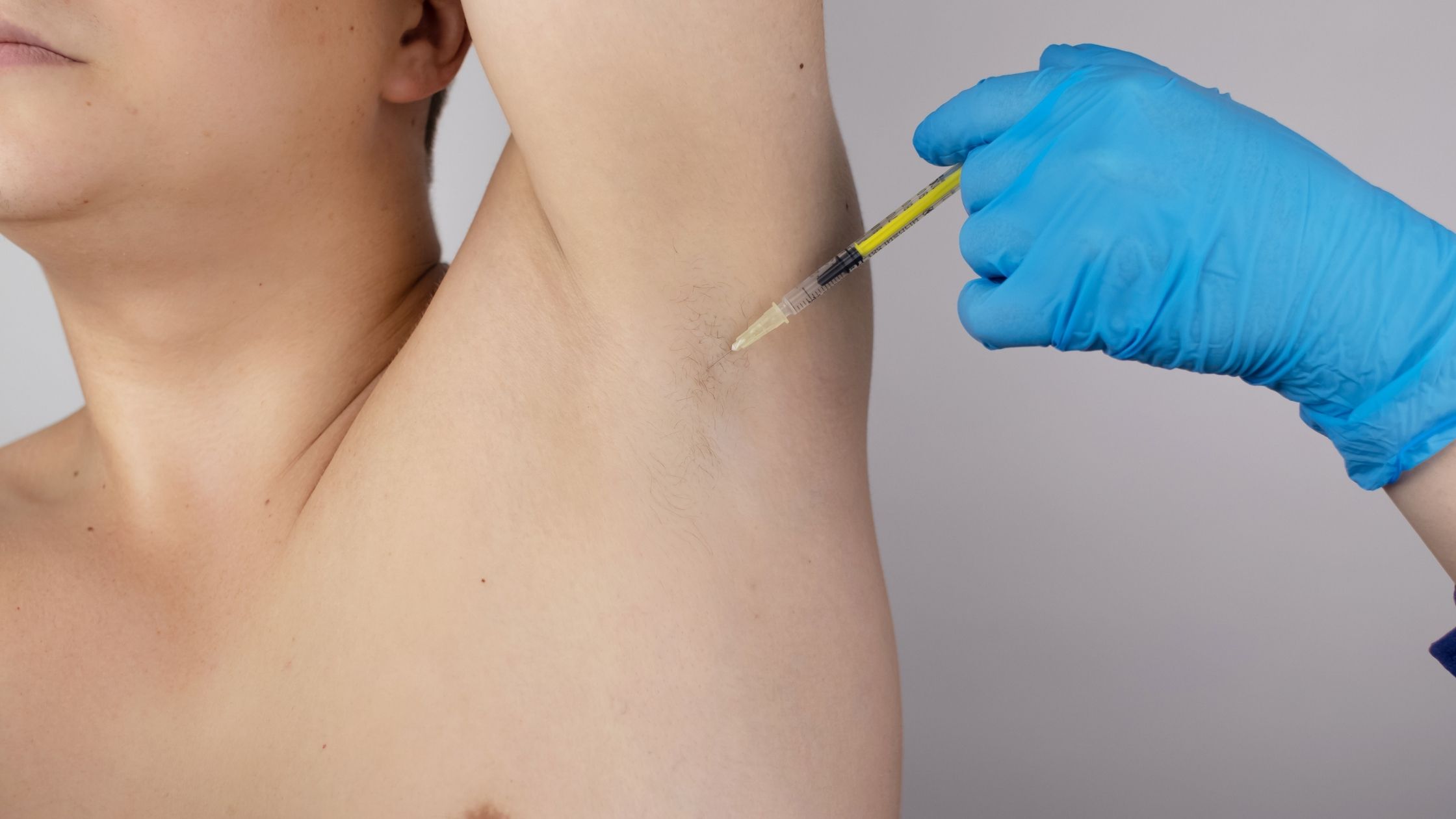Using Botox to Treat Excessive Sweating
Botox is a cosmetic treatment that involves injecting a toxin into the skin. It has medical and cosmetic uses. When most people think of Botox, they envision cosmetic applications to the face to smooth wrinkles. However, it is very effective in reducing excessive sweating.
Botox injections have been approved by the US Food and Drug Administration (FDA) to treat excessive underarm sweating. It works by inhibiting a chemical in the body that causes sweat glands to activate.
Underarm Botox injections, according to the International Hyperhidrosis Society, can reduce underarm sweating by 82–87 percent. The effects typically last 4–12 months, with some cases lasting up to 14 months.
Underarm Botox injections typically produce results 2–4 days after treatment. The full effects are usually apparent within two weeks.
Botox, on the other hand, is not a long-term solution for excessive underarm sweating. Because a single treatment lasts 4–12 months, a person requires ongoing injections.
Botox injections are currently only approved for underarm use by the FDA. A doctor, on the other hand, may prescribe the treatment for excessive sweating on other parts of the body, such as the hands, feet, or face.
What is Botox?
Botox is a neurotoxin derived from botulism-causing microbes. But don’t worry, it’s perfectly safe if used correctly by a medical professional.
Botox is best known as a cosmetic treatment that temporarily paralyzes muscles to smooth out wrinkles on the face. Botox is also used to treat neuromuscular conditions such as migraine, muscle spasms, and hyperhidrosis, which is characterized by abnormal and excessive sweating.
What is Hyperhidrosis?
Excessive sweating caused by overactive sweat glands is known as hyperhidrosis.
How Do Botox Injections Treat Sweating?
Botox injections prevent the neurotransmitter acetylcholine from binding with your sweat glands and signaling the release of sweat.
When your body temperature rises, your nervous system normally activates your sweat glands. This is how your body cools itself naturally. The nerves that signal the sweat glands are overactive in people with hyperhidrosis.
When you get Botox injections directly into the sweaty area of your body, your overactive nerves are effectively paralyzed. When your nerves are unable to communicate with your sweat glands, you do not sweat. Botox, on the other hand, only prevents sweating in the area where it is injected.
What is the Procedure for Botox for Underarms?
The injections can be performed in the office by a medical provider. In 30 minutes or less, experienced medical professionals can inject both underarms.
A medical professional injects very small amounts of Botox beneath the skin for the procedure. They typically inject it in a grid pattern, with injection sites spaced about 1–2 centimeters apart.
You can return to work and normal life as soon as your Botox injections are finished. The practitioner will most likely request a follow-up appointment to check in and touch up any missed areas.
What are the Side Effects of Botox for Sweating?
Many studies have been conducted to assess the safety of Botox for underarm sweating. The majority of people tolerate it well. Fewer studies have looked into the safety of Botox when injected in other parts of the body to stop sweating.
The following are possible side effects include:
- skin irritation or pain at the injection site
- bleeding
- flu symptoms
- headache
Botox injections have extremely rare serious side effects. When Botox affects your entire body, serious side effects may occur. This can happen hours, days, or weeks after you’ve received your injections.
The following are rare but serious side effects:
- muscle weakness throughout the body
- difficulty seeing
- difficulty breathing
- loss of bladder control
Pros and Cons of Botox for Sweating
Botox, like all treatments for excessive sweating, has advantages and disadvantages.
Pros:
- less invasive than surgery
- effective
- relatively long-lasting
- relatively painless
Cons: - costly
- non-permanent
- potential side effects
- not suitable for all body parts
If a person experiences excessive sweating, they should consult their doctor for the most effective treatment.
Botox can significantly improve the quality of life for some people. The injections can be expensive and aren’t always covered by insurance, but they may be a good option if other treatments, such as prescription antiperspirants, haven’t worked. If you or a loved one is interested in treating hyperhidrosis with Botox, give Tonicity Health & Wellness in Safety Harbor a call to learn more.



Recent Comments